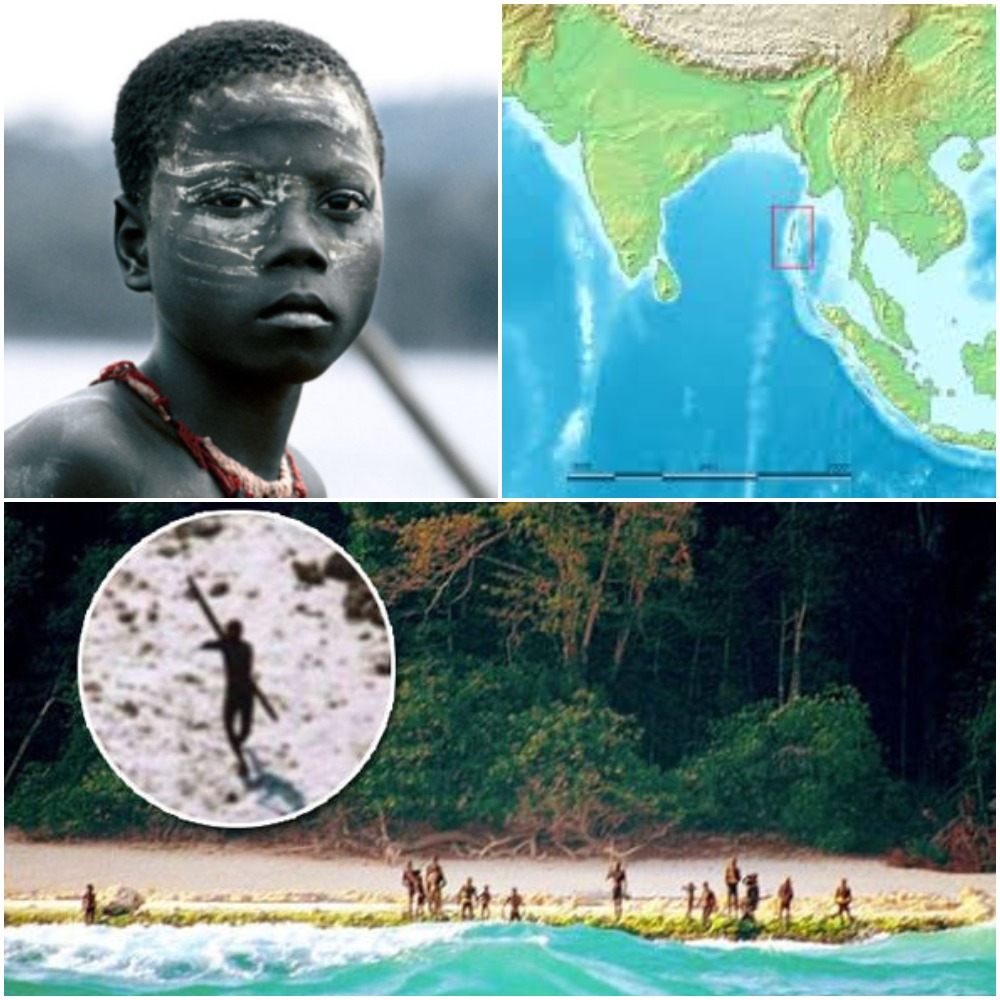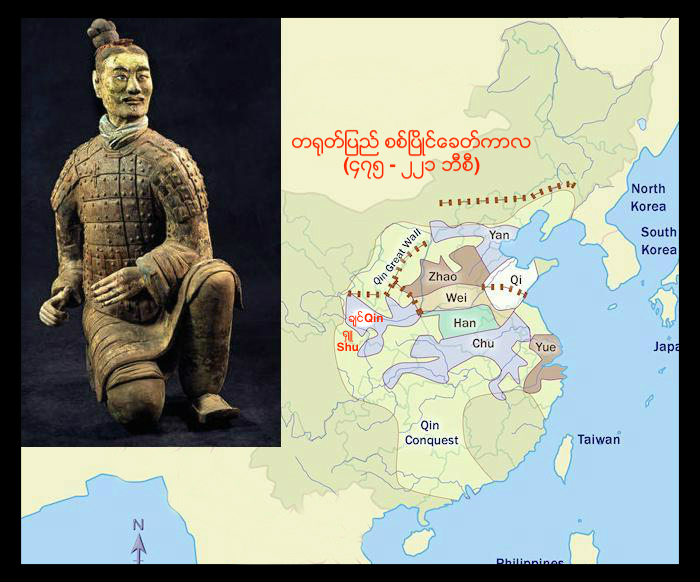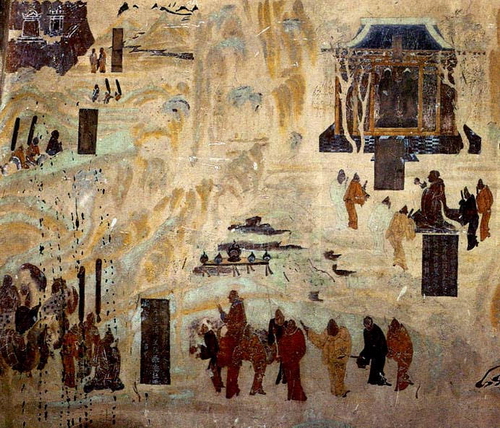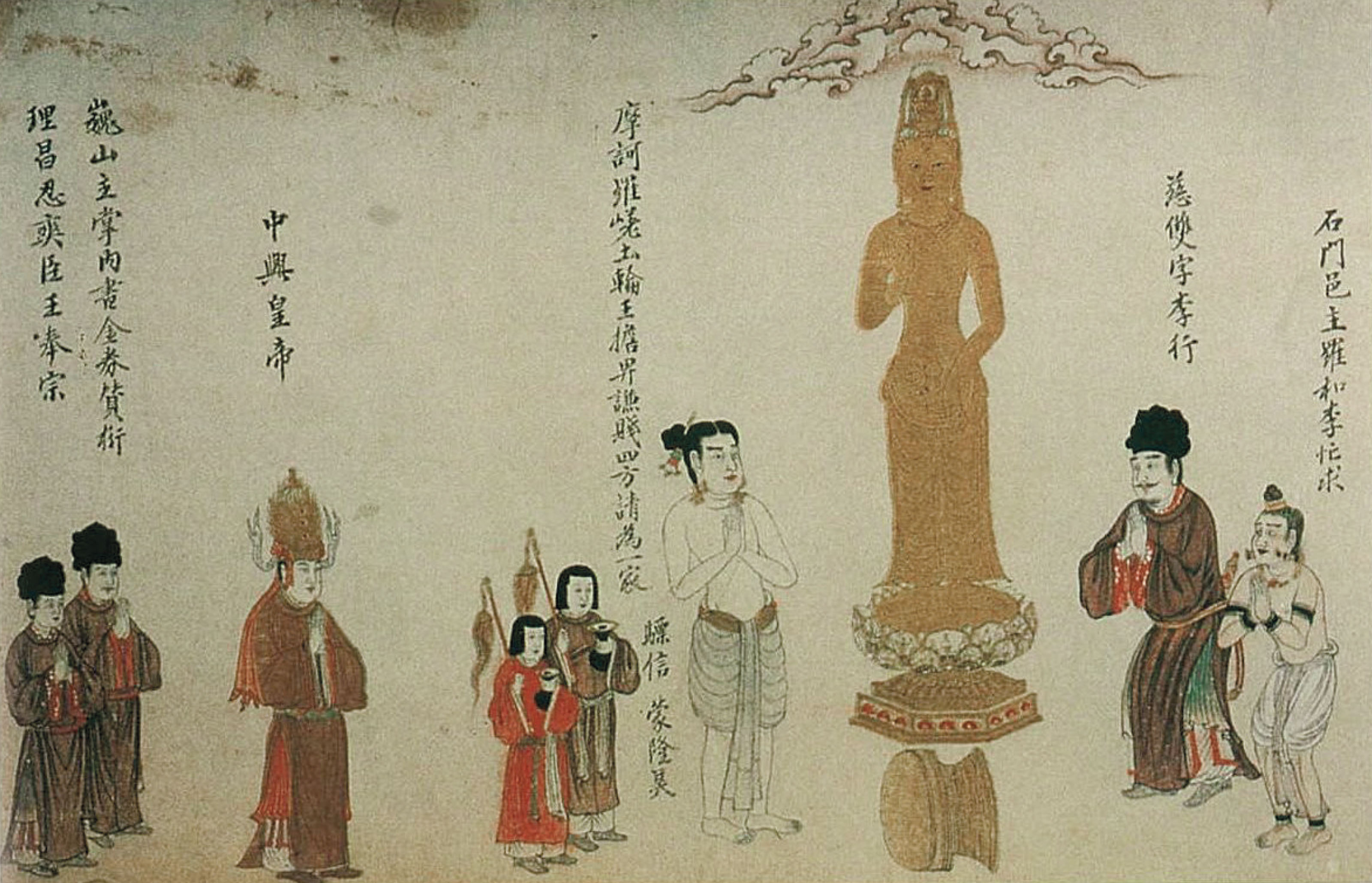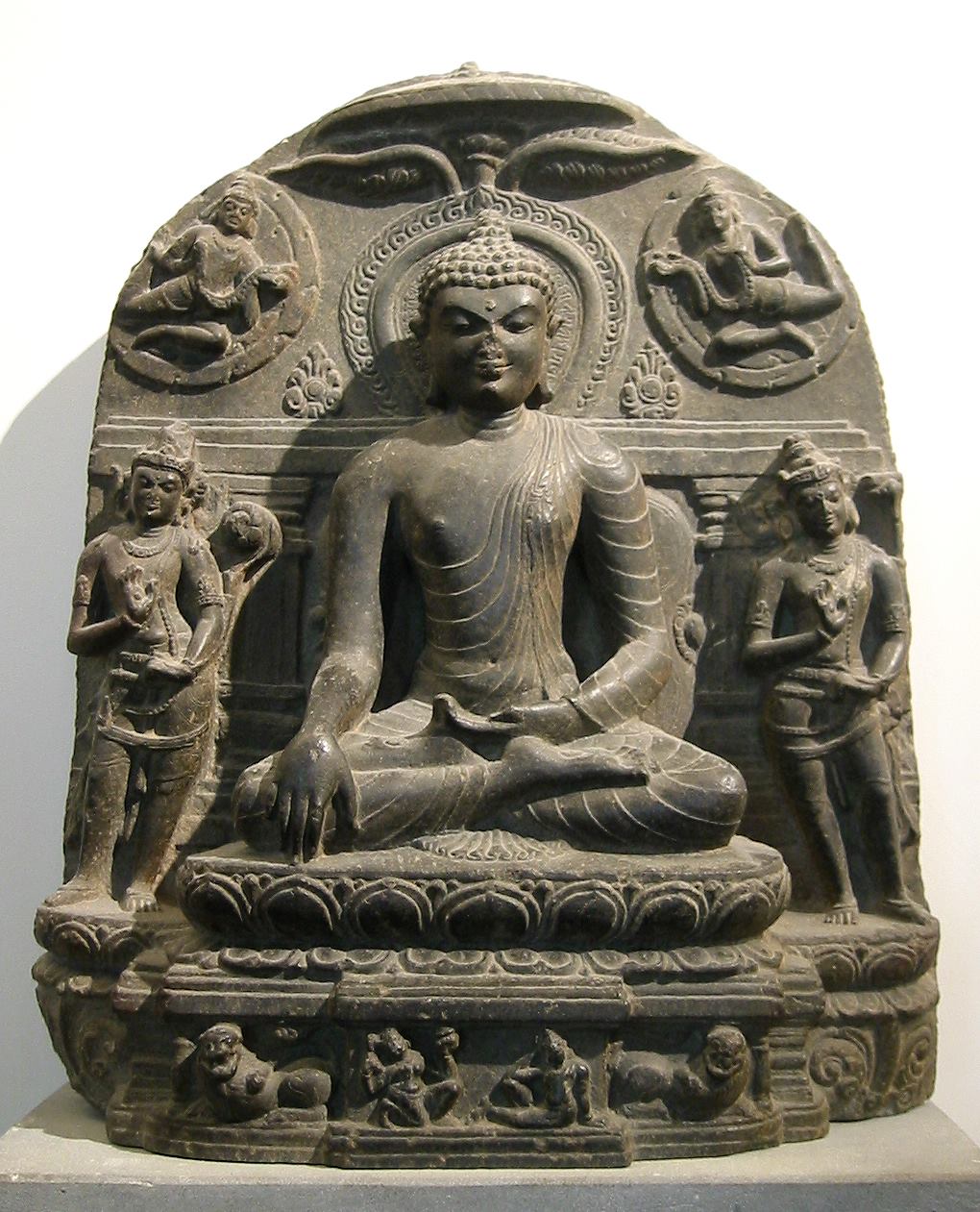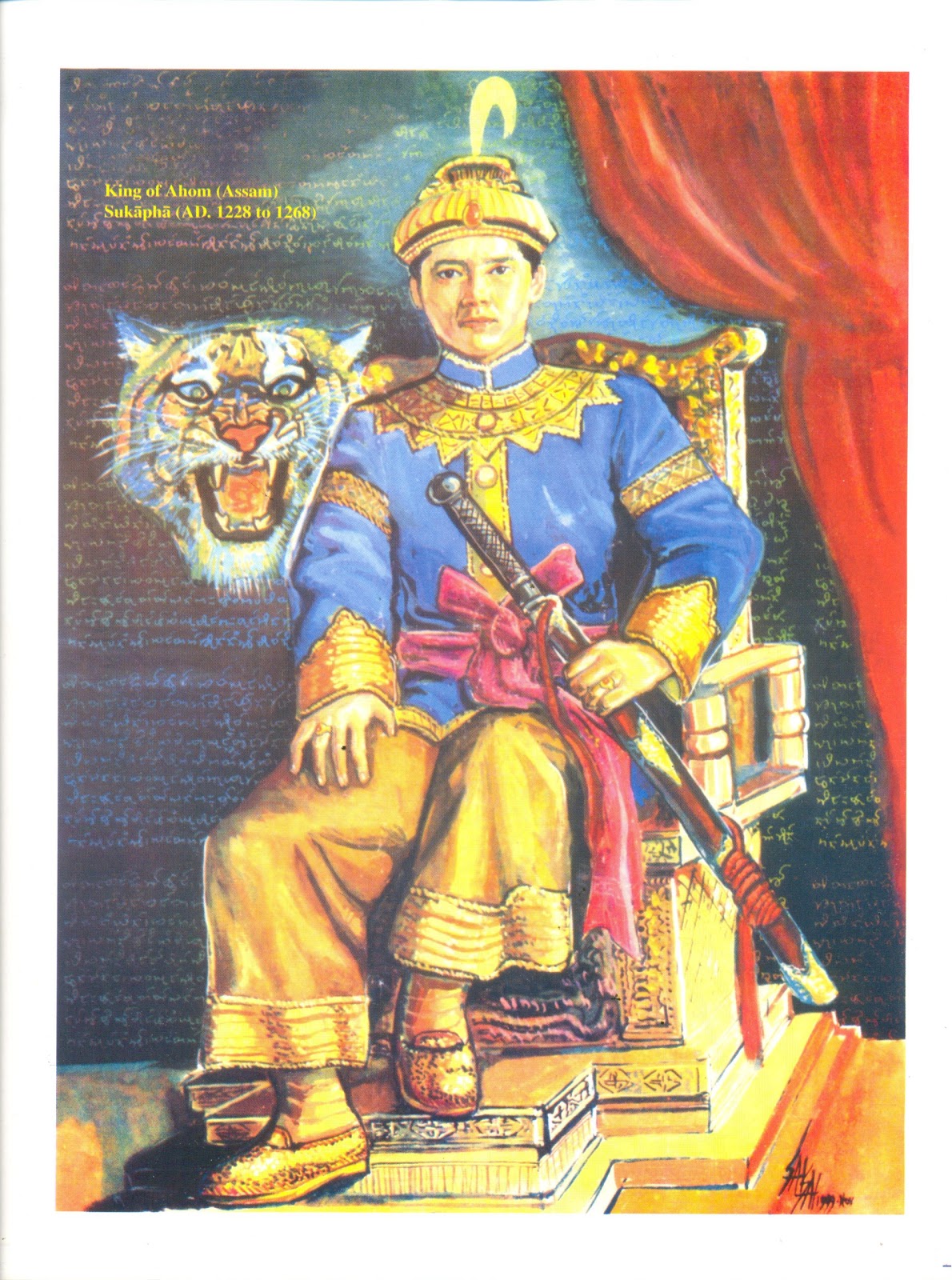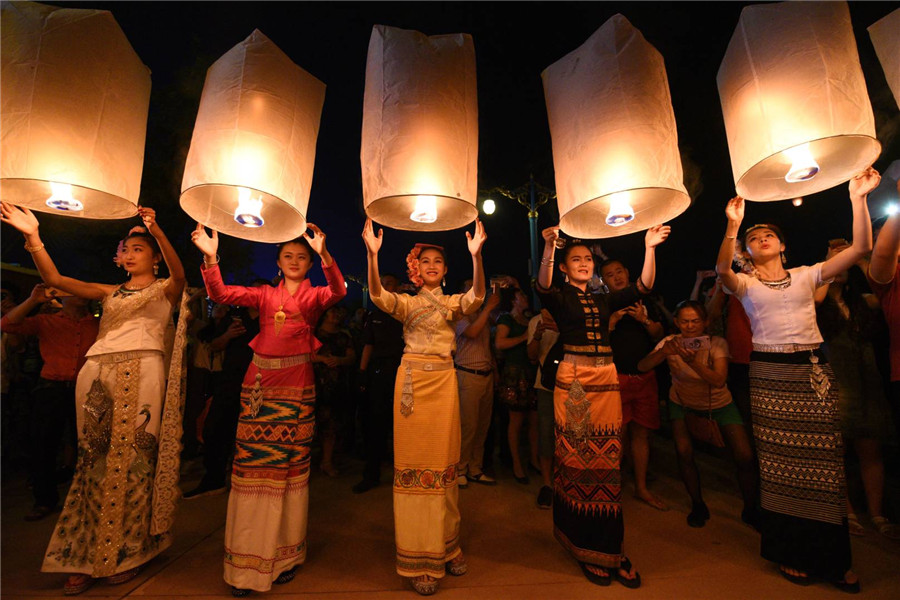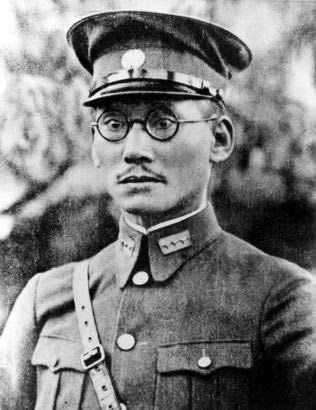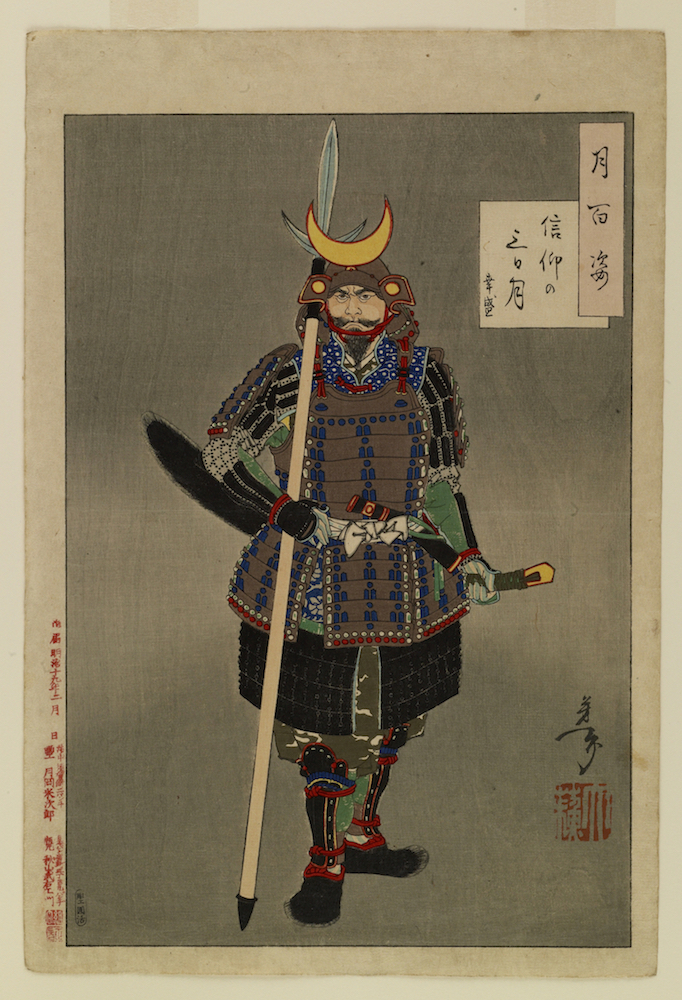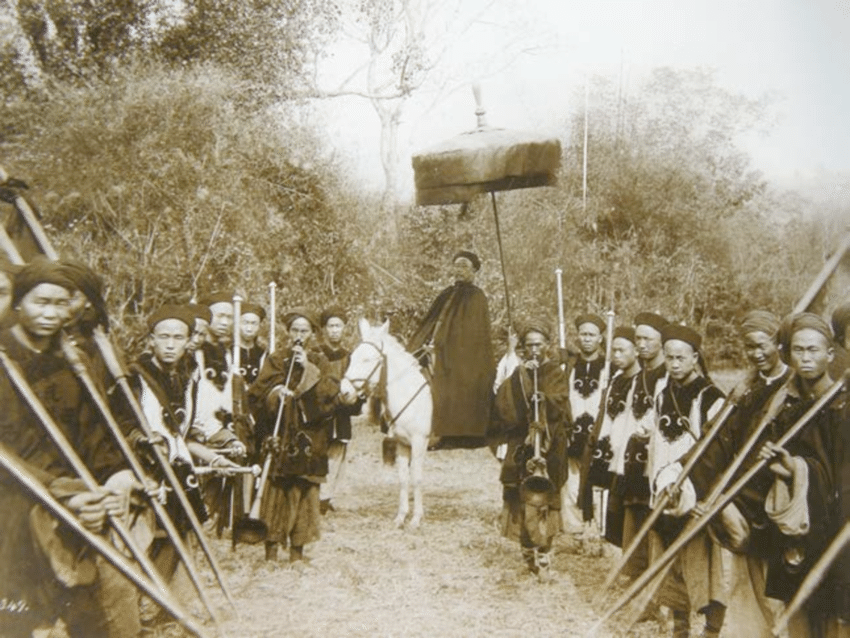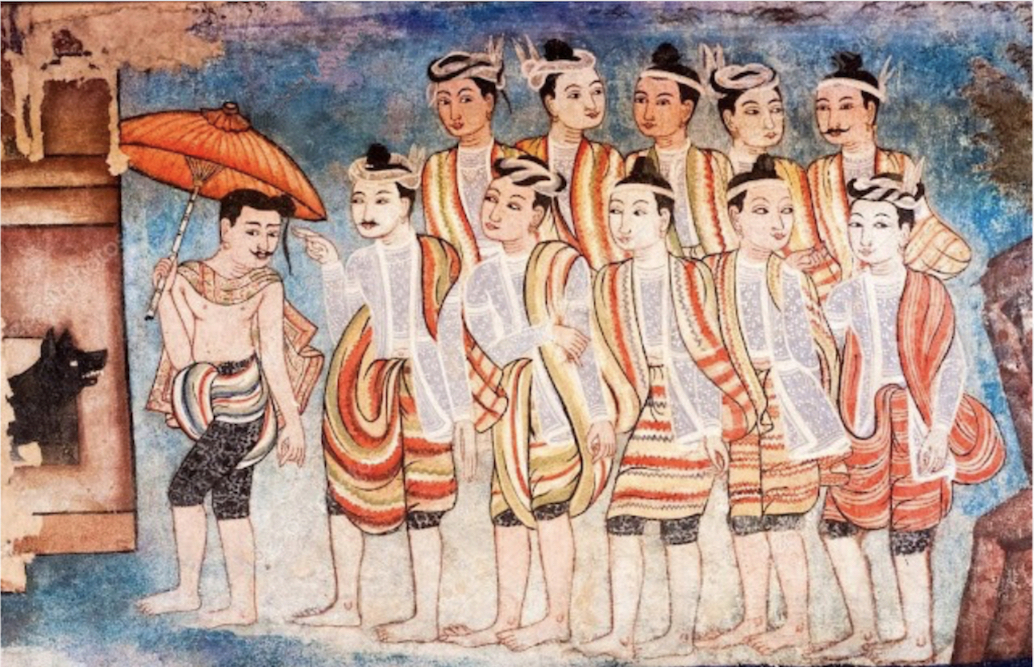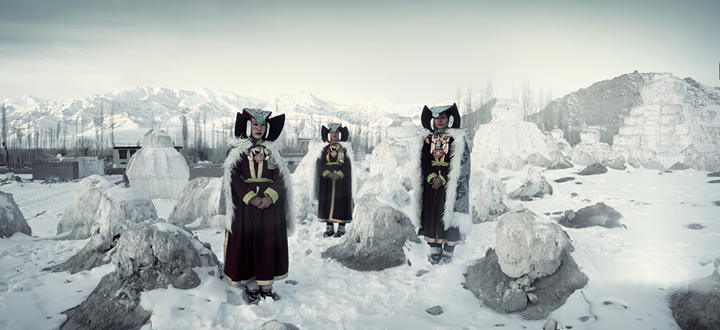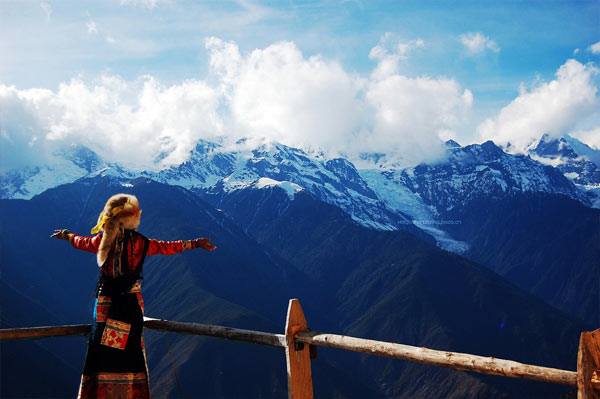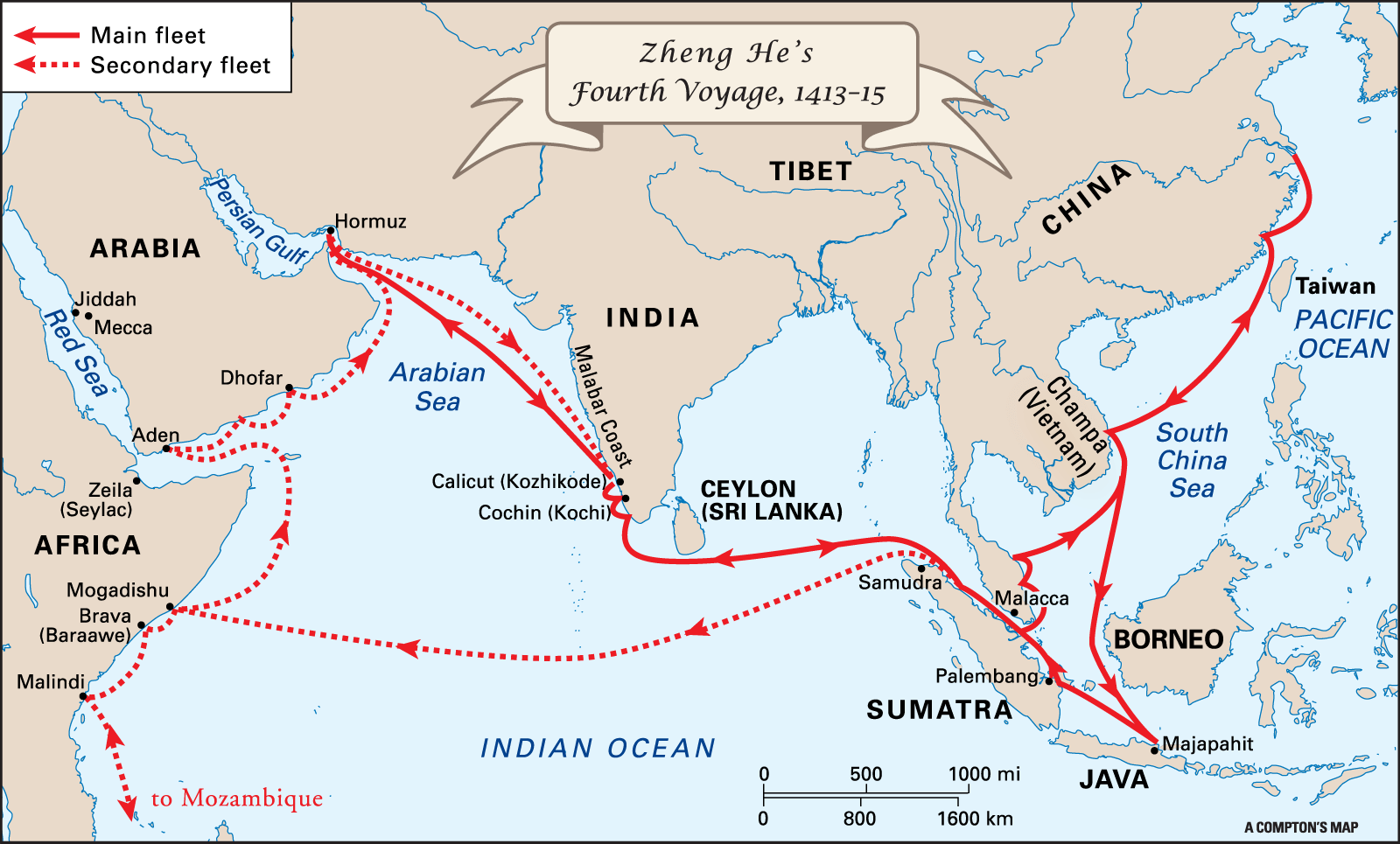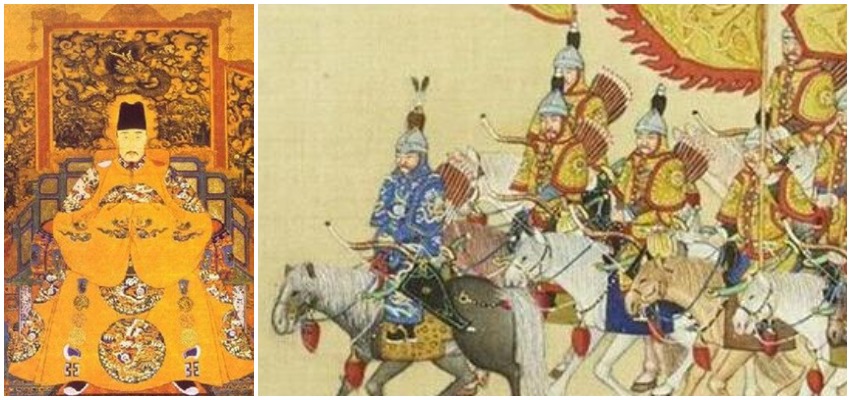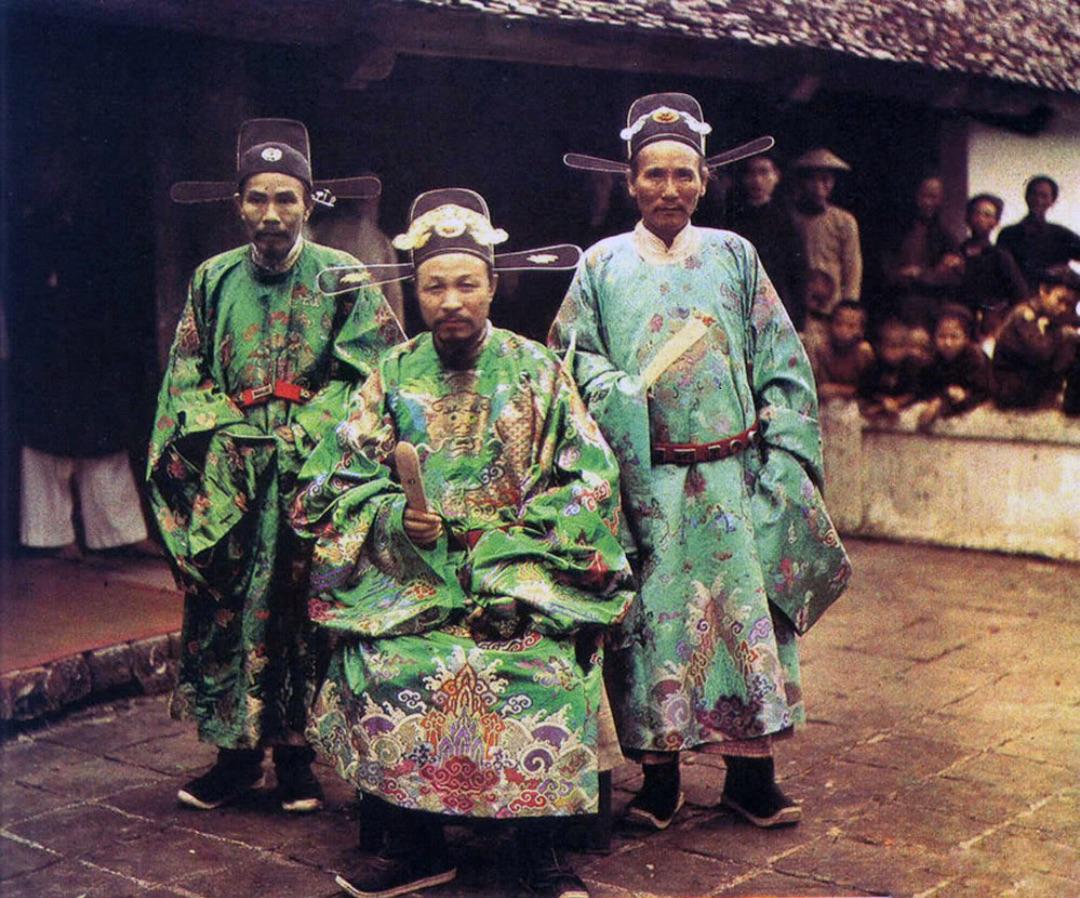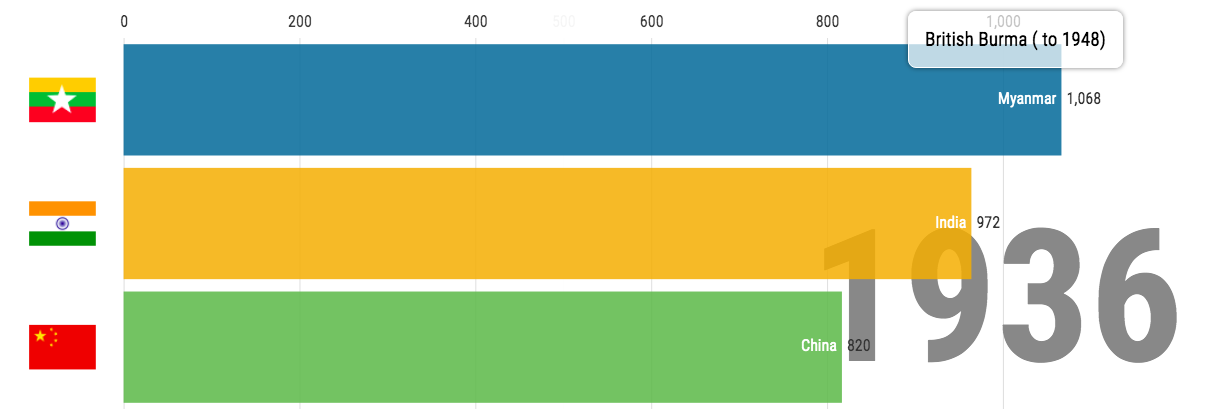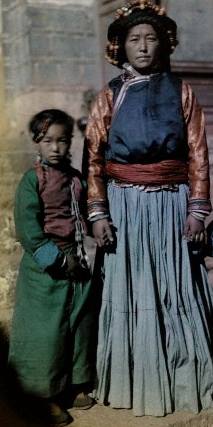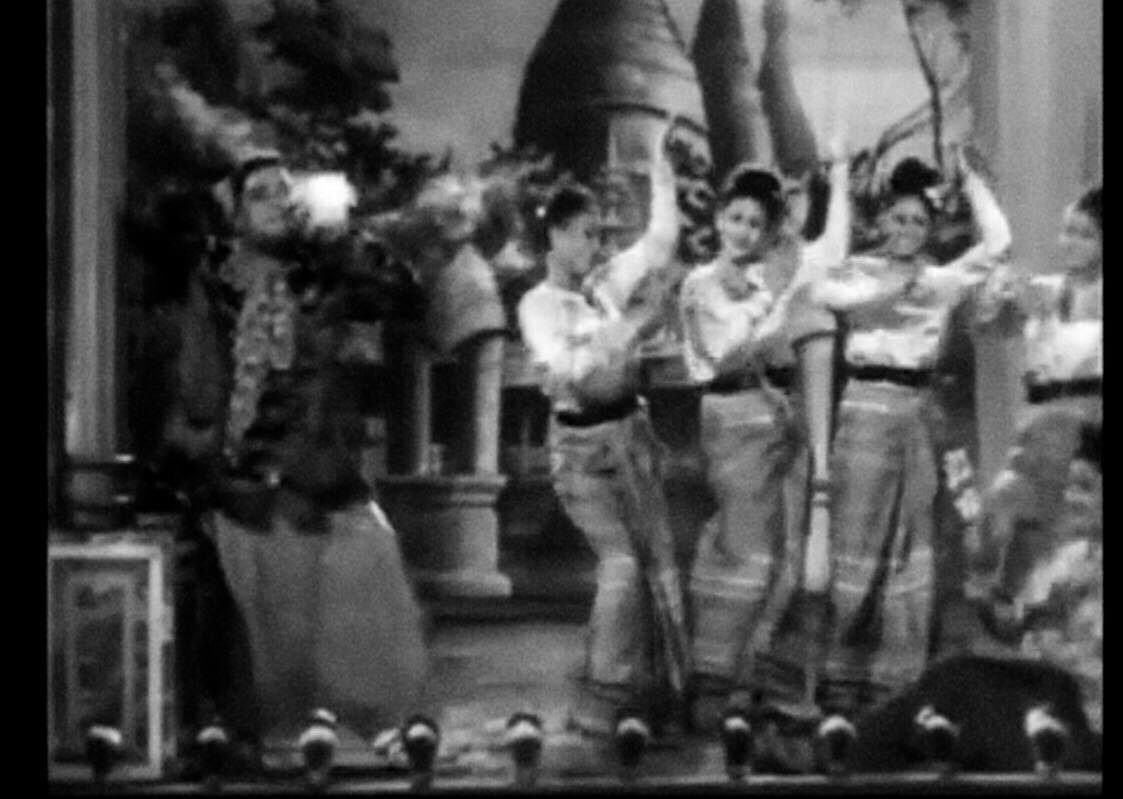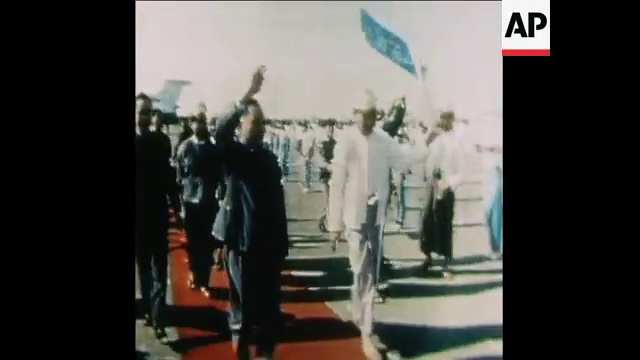Myanmar's Neighbours Past and Present
Located at the strategic crossroads of Asia, Myanmar has long been in conversation with its neighbours. The British colonial powers mapped the precise border that created the boundaries of the country we know today as Myanmar. But rulers and peoples in the region had - for millennia - been both spreading and receiving political, cultural, religious, and linguistic influences. As power emanated from capitals and dissipated with distance, ties of loyalty and language in pre-modern times drew a very different kind of map...
This section showcases Myanmar's neighbours and the ebb and flow of power and influence in the dynamic region.
Myanmar's most mysterious neighbours: the peoples of the Andaman Islands
The Andaman Islands are closer to Yangon than Mandalay. They are today part of India. But their indigenous peoples are perhaps the most isolated anywhere in the world. There are only several hundred native Andamanese people left. They speak languages that are unrelated to any other. Genetically, they are closer to Asians than anyone else. Interestingly, the few whose DNA have been tested are of the Y Haplogroup D-M174, which is found also in Tibet, Yunnan and Japan. Scientists...
Read MoreChina's Warring States
Around the time that Alexander the Great was preparing to conquer the known world, in the fourth century BC, Hui Wen, the king of Qin, was also expanding his domains, laying the basis for an empire that would grow and expand to the present day. This was during China’s "Warring States" period. The country had not yet been unified and Hui Wen’s kingdom, Qin, was only one of several feudal states that were constantly fighting one another for supremacy. Qin...
Read MoreThe first attempt at a China Myanmar Economic Corridor
In 122 BC, a special mission was dispatched by the emperor of China, a mission to find a rumoured southwest passage, one that was said to lead from his Middle Kingdom to the then only recently discovered land of India, and from India to the unfamiliar countries beyond. A few years earlier, the explorer Zhang Qian had arrived back at the imperial court after a long and arduous journey along an already known northern route, reaching the limits of the...
Read MoreOnce upon a Time in Dali Kingdom
For much of its early history, Burma’s neighbor to the northeast was not China, but the independent kingdom of Yunnan with Dali as its capital. And from the eighth to the thirteenth centuries this kingdom was a power in its own right, at times allying itself with the Tibetan empire to its west, at others, with China’s Tang and Song dynasties to the east. Its mounted armies ventured deep into what is today Burma and may have been behind the...
Read MoreThe History of Bengal
From about 3,000 years ago, a society speaking the earliest Aryan languages and worshipping the Vedic gods began to spread eastward along the Ganges, into what is now the state of Uttar Pradesh and then onto to today's Bihar. It was clearly a hierarchical society, with a priesthood near the top and a belief in ritual purity and pollution. The Aryans and Aryan society of the northwest was pure, whilst the new peoples discovered towards the east were stigmatized. There...
Read MoreThe History of Assam
In ancient times, western Assam, including the area around Gauhati, was known as Kamarupa, the land “Where love regained his form”. The story goes something like this: The god Daksha had a daughter who married another god, Shiva. Daksha hated Shiva and disapproved of the marriage. One day Daksha hosted a great sacrifice and invited everyone but Shiva. Daksha's daughter attended but was so distraught with her father’s treatment of her husband that she killed herself. Shiva then became mad...
Read MoreTwo interesting stories of the peoples between Burma and China
The borders of Myanmar and China are new. They go back to the time of the British conquest of Upper Burma in 1885-90. Two thousand years ago, China's Han dynasty established an outpost near where Muse is today. But, at that time, almost no Han Chinese people lived in Yunnan and Chinese control of Yunnan was temporary. Yunnan was ruled by its own kingdoms (like Nanchao) or other outsiders (like the Mongols). It was only in the 1600s that Beijing's...
Read MoreWarlord of Yunnan
From the 1920s through most of the 1940s, Long Yun (pictured here) was known as the "King of Yunnan", controlling what is now the Burma-China frontier during World War Two. This was the period of China's civil war, when the country was divided between the Nationalists under Chiang Kai-shek, the Communists under Mao Zedong, and dozens of regional warlords. Long Yun was not an ethnic Han Chinese but Yi (the Yi language is very similar to Lisu and not very...
Read MoreEarly Japan-Myanmar connections
No one knows exactly when the first Japanese came to Myanmar, but it was likely by the early 1500s. This was during the Sengoku, or warring states, period when Japan experienced over a century of internal armed conflict. The 16th century was also a time of fast expanding global trade, linking markets across Asia, Europe, and Africa to the Americas. Slavery was an important part of these new markets. There were significant Japanese communities during this time in Manila and...
Read MoreA short history of the China-Myanmar border
Many different peoples, with very different cultures and speaking different languages have lived for tens of thousands of years in the areas along what is today the China-Myanmar border. About 2,000 years ago, during the time of the first urban civilizations in the Irrawaddy valley, much of what is today eastern Yunnan was ruled by the Dian Kingdom. The Dian kings likely spoke a language related to Burmese, but it is uncertain. Other peoples in Yunnan spoke other Tibeto-Burman languages...
Read MoreBurmese visiting Chiangmai
Since its founding in the late 13th century, the kingdom of Lanna or Chiangmai (Zinme in Burmese) was an independent kingdom for most of its history. The people of Chiangmai traditionally speak a Tai dialect very similar to the one spoken in Kengtung and other eastern Shan states. For most of the period 1558–1775, Chiangmai was under Burmese rule. In the 19th century, the region then came under the control of Bangkok's current dynasty. This image is part of a...
Read MoreNortheast East India is almost a mirror image of Myanmar
When most people in Myanmar think of India they naturally think of the centuries-old connections across the Bay of Bengal to South India (where Buddhism in Myanmar likely originated), Bengal, and places further afield. They rarely think of the 40 million people of Northeast East India (Assam, Arunachal Pradesh, Nagaland, Manipur, Mizoram, Tripura, Meghalaya, and Sikkhim) which - in some ways - is almost a mirror image of Myanmar, with its central Brahmaputra valley, its surrounding uplands, its history of...
Read MoreLanguage Cousins
Ladhaki (and Balti) languages are very similar to Tibetan. They are the westernmost speakers of Tibeto-Burman languages and so are linguistic cousins of the Burmese. Tibeto-Burman is a family of languages spoken by over 50 million people. The two biggest languages in the family are Tibetan and Burmese. Jingpaw, Chin, Naga, and many languages in Nepal, Northeast India, and Southwest China are also part of this family. The Tibeto-Burman languages closest to Burmese include Yi, Naxi, Lisu, Atsi, and Maru....
Read MoreNaxi Kingdom
Just across the border from Kachin State is the first bend of the Yangtze River. Many of the people of this area speak Naxi language. The Naxi kingdom was an independent kingdom until the 1950s. The Naxi and related Mosuo number about 400,000 people today. They live in what is now the northwest of China's Yunnan province. The biggest Naxi town in Lijiang, which is about 200 miles northeast of Myitkyina, just on the other side of the Kachin hills....
Read MoreThe great world explorer from Myanmar-Yunnan Border
One of the greatest explorers in world history was a Panthay Muslim from the Burma-Yunnan border. In 1413, a great fleet of Chinese ships were arriving for the first time along the African coast (they would bring back with them, amongst other things, a giraffe for the Ming Emperor's menagerie). This was the fourth of seven monumental voyages in the early decades of the 15th century commanded by the great admiral and imperial eunuch Zheng He. Each voyage involved a...
Read MoreThe Flight of the Ming Prince
From the west it was Mughals, moving in against the borders of a fast-shrinking Arakan. But to the north and east, it was an ever more vigorous China, pressing down hard, right into the heart of Burma. In China in 1646, after the fall of the Yangtze Valley and the eastern coast to the invading Manchu armies, the 23-year-old prince of Gui, the last surviving grandson of the Wanli emperor, became the last and desperate hope of the Ming imperial...
Read MoreThe Indian Prince who fled to Mrauk-U
Shah Shuja (pictured here), the Mughal viceroy of Bengal and Orissa in the middle years of the 17th century, was the second son of the emperor Shah Jehan and the empress Mumtaj Mahal. The Mughals were the new overlords of a vast Indian empire that stretched across nearly the entire subcontinent. Originally Central Asians, they claimed descent from Genghis Khan through Timur Lang, the great conquering warrior of Samarkand (and the Tamerlane of Christopher Marlowe). The first Mughal emperor, Babur,...
Read MoreTipu's Tiger
This 18th-century wooden automaton enacts a European soldier being mauled by a tiger; it has an organ in the back that makes the European soldier’s arms move and he groans. The device was made for the Tipu Sultan, the ruler of the powerful Mysore kingdom in South India from 1782 to 1799. The Tipu Sultan was a great enemy of the British East India Company, who fought three wars against him. When he was finally defeated and his capital overrun,...
Read MoreDiplomatic relations between Burma and Vietnam
The first Burmese embassy to Vietnam was in 1822-23. The embassy left Ava in July 1822 and, after some months in Yangon getting ready, sailed via Penang, Malacca, and Singapore, reaching Saigon in June 1823. The Burmese king at the time was Bagyidaw. He was very keen to conquer Siam and hoped Vietnam might be a useful ally. Vietnam had then just annexed Cambodia. The emperor was Minh Mang, who had just taken the throne after the death of his...
Read MoreManipur under British rule
Manipur (known as Kathe or Cassay in Burmese) was an independent kingdom with a royal family that came to power in the 1690s. The Manipuri or Meithei language is a Tibeto-Burman language related most likely related to Kuki-Chin and Naga. In 1725, and again in 1749, the Manipuris under their Hindu king Garib Newaz overran much of today's Sagaing Region, contributing to the fall of the Toungoo dynasty in 1752. In 1819, the Burmese king Bagyidaw conquered Manipur, leading to...
Read MoreGDP over the years
This info-graphic shows Myanmar's per capita GDP relative to India and China over the past hundred years. GDP is the market value of everything produced in a country over a given year. GDP per capita is a very rough measure of a county's wealth. As is evident in this graphic, Myanmar's per capita GDP stood ahead of both India and China in the 1930s and was ahead of China until the 1960s. It is now behind both but especially far...
Read MoreQueen of Hlihin
This photograph shows a queen of the Hlihin, Myanmar's neighbours to the north c. 1945, in what is today western Yunnan. The Hlihin were an independent people who spoke a language related to Burmese. Their homeland was absorbed into the Peoples Republic of China in the 1950s.
Read MoreMere Piya Gaye Rangoon (My husband went to Rangoon)
"Mere Piya Gaye Rangoon" (My husband went to Rangoon), from the 1949 hit movie Patanga, is one of the mosst famous songs in India. For many Indians, Rangoon was once a place of prosperity where you could reinvent your life and be free; one Indian family now living in the United States refer to Rangoon as it was their "first America". In this song, the wife talks only of missing her husband. The husband, calling from Rangoon, tells her he...
Read MoreThe first Chinese leader to visit Myanmar
This video shows the highlights of Deng Xiaoping's visit to Rangoon in January 1978. Deng Xiaoping was the first Chinese leader to visit Myanmar; Zhou Enlai had visited several times as Premier, but not Mao Zedong or Hua Guofeng. For more than a decade, China had been providing strong support to the Communist Party of Burma insurgency based in Pangsang. But, by 1978, China was keen to build closer economic and political ties with the Burma Socialist Programme Party government of...
Read More